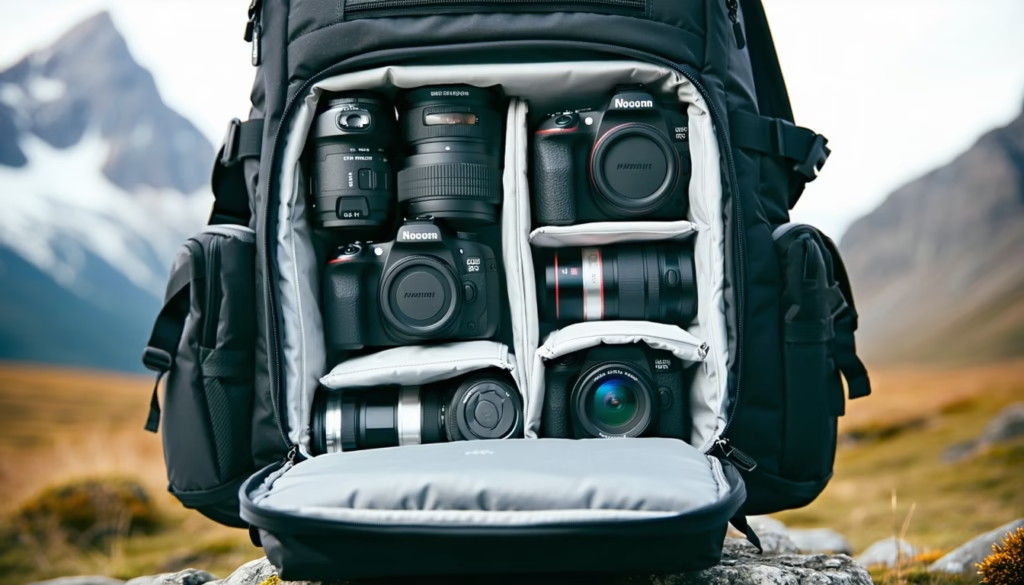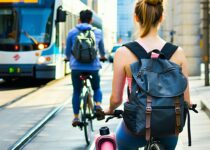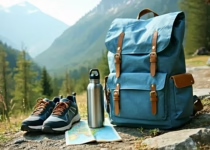Must-Have Features Every Photographer Wants in a Backpack

When you’re gearing up for a shoot, knowing the essential features every photographer should want in a backpack makes all the difference between smooth shooting and scrambling for a missing lens. In this guide, you’ll discover the must-have elements that protect your gear, boost your efficiency, and keep you comfortable on long days. By the end, you’ll feel confident choosing a camera backpack that fits your style and workflow.
Ensure The Right Fit
Getting a backpack that feels like an extension of your body helps you shoot longer without fatigue. Here’s what to look for:
Capacity And Size
- Match the pack’s interior volume to your kit. A compact setup with a mirrorless camera and two lenses needs under 20 liters.
- If you carry multiple bodies, extra batteries, or a drone, consider 25–35 liters.
Adjustable Straps And Harness
- Shoulder straps should contour to your frame, with enough padding to cushion heavy loads.
- A sternum strap prevents shoulder straps from slipping outward, keeping the weight centered.
Sizing For Your Body
- Try on packs with your gear inside. The frame height should span from the base of your neck to your hips.
- If you travel between subjects quickly, ensure the hip belt sits on your iliac crest (the top of your hip bones) for better load transfer.
Include Protective Padding
A bag is only as good as its ability to safeguard your investment. Shock, bumps, and jostles are part of any shoot—here’s how to keep your camera safe.
Padded Camera Compartments
Well-padded dividers cushion your bodies and lenses. Look for high-density foam that compresses under impact but holds its shape over time.
Shock Absorbing Materials
Some backpacks include EVA (ethylene vinyl acetate) foam panels or honeycomb mesh on the back and sides. They absorb sudden knocks and keep your kit snug.
Gear Protection Tips
- Use lens caps and body caps whenever you stow gear.
- Consider how to protect your DSLR gear in a backpack for extra peace of mind.
Add Modular Divider Systems
Nothing kills creativity like digging through a tangled bag. Modular dividers let you customize your layout for any shoot.
Customizable Inserts
Velcro-attached padding lets you carve out the perfect slots for bodies, lenses, flashes, and accessories. If you upgrade gear, you can reconfigure without replacing the entire pack.
Removable Dividers
For non-photo items—snacks, a rain jacket, or a small tripod—remove a few dividers and reclaim that space. This flexibility turns your camera backpack into a hybrid carryall.
Incorporate Weatherproof Materials
Moisture, dust, and sudden downpours can ruin a session. Choosing the right fabric and weatherproofing features is essential.
Water Resistant Fabrics
Look for nylon with a high denier rating (e.g. 500D or 600D) and a durable water repellent (DWR) finish. This combo sheds light rain and mist.
Built In Rain Cover
A stowed rain cover deploys in seconds to shield zippers and seams. If your pack lacks one, check out our guide on what to look for in a waterproof camera backpack or shop packs with built-in rain covers.
Build Quick Access Points
You want to grab that lens or camera body in a heartbeat. Fast-access features get you shooting before the moment fades.
Side And Top Entry
- Side-zip panels let you reach gear without taking off the pack.
- Top-loading access works well if you tend to empty and refill your bag frequently.
Fast Access Doors
Some manufacturers tuck a U-shaped zipper behind the straps for front-facing entry. This design lets you swing the pack around and grab gear without setting it down.
Check out the best camera backpack layouts for fast access to compare entry styles.
Enhance Comfort And Support
A heavy pack becomes a burden without proper ergonomics. Comfort features help you carry your kit all day.
Padded Back Panel
A mesh-covered foam panel allows airflow and cushions your spine. Look for grooves that promote ventilation.
Ventilation And Load Distribution
Suspended mesh or channel systems create an air gap between you and the pack, reducing sweat. Load-lifters (small straps at the top) angle the pack toward your back for better balance.
Waist And Chest Straps
A padded hip belt shifts weight to your hips, reducing shoulder strain. A chest strap keeps shoulder straps stable when you walk or climb.
Consider Additional Compartments
Beyond your camera and lenses, you need space for accessories and personal items. Organized pockets save precious minutes in the field.
Lens Pockets
Dedicated side or front pockets protect spare lenses from impact and scratches. For more on lens organization, see best ways to organize lenses inside a camera backpack.
Memory Card Slots
Small zippered or elastic pockets keep cards safe and easy to find. Learn the safest way to store memory cards in a backpack with our guide: the safest way to store memory cards in a backpack.
Laptop And Tablet Sleeve
If you edit on the go, a padded laptop compartment that meets TSA size limits is a lifesaver. Compare options in camera backpacks with tsa-friendly laptop compartments.
Tripod Attachment
Built-in straps or side straps hold a tripod securely. For creative support, read how to carry a tripod using a camera backpack.
Assess Security Features
Protecting your gear means guarding against theft as well as damage. Security add-ons help you shoot worry-free in crowded or public settings.
Anti Theft Mechanisms
Locking cables or steel mesh lining deter slashers and pickpockets. Many packs now include hidden pockets for passports and wallets.
Lockable Zippers
Look for zipper pulls designed to interlock, so you can thread a small padlock through them.
RFID Safe Pockets
Some brands offer pockets lined to block RFID (radio frequency identification) signals, keeping your cards and passport data private.
Need inspiration? Check camera backpacks with anti-theft design to buy now: camera backpacks with anti-theft design to buy now.
Evaluate Extra Conveniences
A few bonus features turn a good backpack into a great one. Don’t overlook small touches that make your day easier.
Hydration And Tripod Holders
- Hydration-tube ports keep you hydrated on long hikes.
- Elastic straps or webbing loops let you secure a drone or monopod. For safe drone packing, see tips for packing a drone and camera together safely.
Reflective Elements
If you shoot in low light or urban settings, reflective strips enhance your visibility to others. It’s a small safety detail that pays off.
Modular External Straps
Extra straps let you lash on jackets, grips, or light stands. These tie-down points keep bulky items from eating up space inside.
Frequently Asked Questions
What Size Backpack Do I Need For DSLR Gear?
Choose based on your kit’s size and shooting style. A pack under 20 liters works for one body and 2–3 lenses, while 25–35 liters suits multiple bodies or a drone. For more, see how to choose the right size camera backpack.
How Do I Keep My Lenses Scratch Free?
Use padded, felt-lined pockets and lens caps. Store lenses vertically when possible. Learn more at tips for keeping lenses scratch-free inside a backpack.
Can I Carry A Drone In My Regular Camera Backpack?
Yes, if the pack has modular dividers and enough depth. Avoid jostling props and batteries by using dedicated drone compartments or padded pouches.
What’s The Difference Between Hiking And Camera Backpacks?
Camera packs focus on modular protection and quick access, while hiking packs prioritize ventilation and weight distribution. Read the full comparison: the difference between hiking and camera backpacks.
How Do I Prevent Back Pain When Carrying Gear?
Look for padded back panels, adjustable hip belts, and chest straps. Keep heavy items close to your spine and balance the load evenly. See how to prevent back pain when carrying camera gear.
Is A Backpack Better Than A Hard Case?
Backpacks offer mobility and quick access, while hard cases provide unmatched impact protection. Your choice depends on terrain, travel style, and kit value. Compare: camera backpack vs. hard case: which is better.
How Do I Pack Light For A Photography Trip?
Prioritize versatile lenses, limit accessories, and use compact lighting options. For detailed tips, check how to pack light for a photography trip.
Conclusion
Choosing a camera backpack that checks off these essential features helps you focus on capturing the shot, not fighting with your gear. From custom dividers to quick-access pockets and reliable weatherproofing, each element plays a role in protecting your investment and enhancing your workflow.
Start by listing your must-haves, then try on a few packs loaded with your kit. With the right combination of fit, protection, and convenience, you’ll be ready for any shoot that comes your way.


